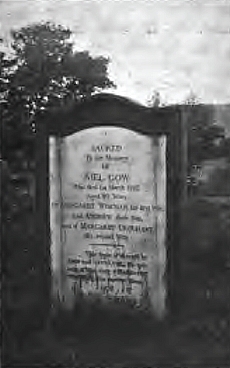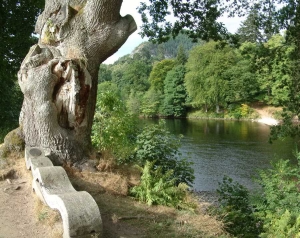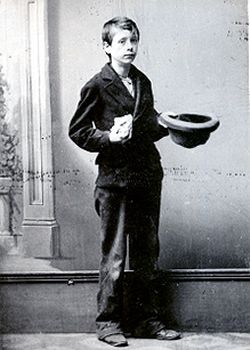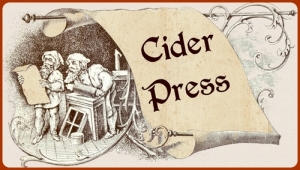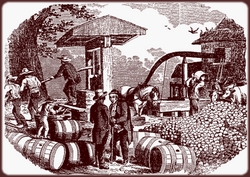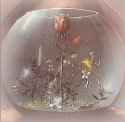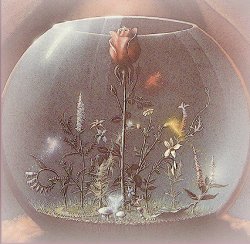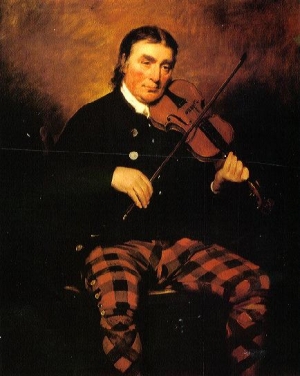
The Music Of
The Gow Family -
Fiddler Niel Gow
& His Sons
The following article excerpts and images are from a magazine published in 1899 in Glasgow, The Celtic Monthly. You can download a PDF file of the original scanned pages of the article.
You can also see our 3 collections of some of the
music of Niel Gow and his sons below...Niel Gow
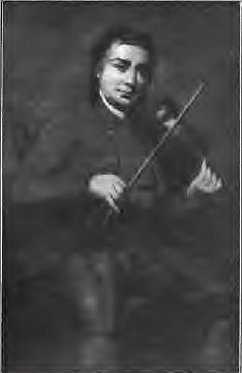 Niel Gow was born at Inver, near Dunkeld, on March 22nd, 1727. The old cottage in which he lived to the time of his death is still intact and occupied. It used to face north on to an old road through the hamlet. The original entrance was closed up and a new door constructed facing south on to a vegetable garden. At the corner of this house there is a large whinstone boulder, nearly square in shape, with a flat top. This formed one of Niel's favourite seats on summer evenings, when he used to play to the young folk dancing on the green. This and some of the following traditions were told to Mr. Charles M'Intosh, of Dunkeld, now a venerable musician, by his grandmother, who, as well as his grandfather, were neighbours and intimate friends of Niel Gow. The old lady also pointed out a fir tree by the side of the river Brau as another favourite spot of his, which gave the name to his tune called " The Fir Tree." As Herder remarks in his " Ideas to the Philosophy of History," The nature of a country forms the nature of the people that live in it."
Niel Gow was born at Inver, near Dunkeld, on March 22nd, 1727. The old cottage in which he lived to the time of his death is still intact and occupied. It used to face north on to an old road through the hamlet. The original entrance was closed up and a new door constructed facing south on to a vegetable garden. At the corner of this house there is a large whinstone boulder, nearly square in shape, with a flat top. This formed one of Niel's favourite seats on summer evenings, when he used to play to the young folk dancing on the green. This and some of the following traditions were told to Mr. Charles M'Intosh, of Dunkeld, now a venerable musician, by his grandmother, who, as well as his grandfather, were neighbours and intimate friends of Niel Gow. The old lady also pointed out a fir tree by the side of the river Brau as another favourite spot of his, which gave the name to his tune called " The Fir Tree." As Herder remarks in his " Ideas to the Philosophy of History," The nature of a country forms the nature of the people that live in it."
To understand a man's train of thought we must know the conditions under which he lived. Now, the village of Inver is situated on the banks of the Brau, a small tributary of the river Tay, about a mile from Dunkeld, in the county of Perth. It is one of the most romantic spots in the whole of Great Britain, surrounded by lofty forest clad, craggy hills, with the rushing torrent of the Brau which has just emerged from a tremendous gorge. At the back of the village, behind a range of hills, roll the waters of the majestic Tay, along a winding valley overhung by the wild and rugged forms of wooded mountains.
This was Niel Gow's schoolroom, and the roar of the waters, howling winds, and lonely glens inspired him with those rugged tunes that are to this day the delight of his countrymen, and in fact to all that hear them properly played.
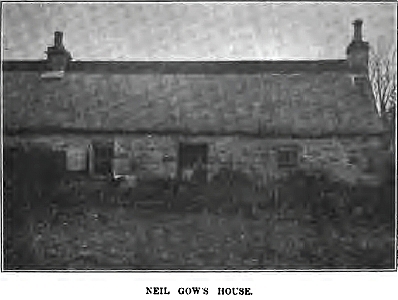
Niel Gow was the first of the family known to have followed music as a profession. His parents, John Gow and Catherine M'Ewan, intended Niel to become a plaid weaver, but the boy showed a decided preference for music at a very early age, and chose the fiddle for his instrument. It was not before he was thirteen years old, however, that he received systematic instruction from John Cameron, a follower of the house of Grand- tully. His progress was so rapid that he soon surpassed all the performers in his native county, notwithstanding the fact that Perthshire produced the finest Reel and Strathspey players in all Scotland. According to tradition he became first known in the year of the Great Rebellion. The story, with many others concerning Niel Gow, is told in Drummond's " Perthshire in bygone days." The occasion was a competition in which Gow appeared with nine others, including his own master, John Cameron, and James Dow," who became celebrated as a composer of dance music." The judge was John M'Craw, a blind fiddler, who gave his verdict unhesitatingly in favour of young Gow, saying: " I would ken his bow hand amang a huhder players."
John Glen remarks that if this story is not a myth, the Dow who competed must have been Daniel, not James, as that was the only Dow who attained fame as a fiddler and composer, and he was at the time of the competition only thirteen years old. The power of Niel's bow has been commented upon by all his contemporaries.
(The Strad)
*WITH the exception of the greater lights, few men were better known in his day than Niel Gow, the famous Perthshire fiddler. This remarkable man and musical genius was born at Inver, near Dunkeld, on the 27th March, 1727; and rose—like one of the hills amongst which he spent his life—far above his compeers, and was acknowledged by his contemporaries and others as being the best player of Scotch Strathspey music that ever handled a bow. Of this there can hardly be a doubt, as there is abundant evidence, both direct and indirect, to substantiate it. His fame spread so rapidly that he was well known by reputation in every county in Scotland, and beyond the border as well. His parents first intended him to become a plaid weaver, but he showed at an early age such a predilection for music that the idea of his becoming a weaver was soon abandoned. He received no musical instruction until he was thirteen years of age, when he was placed under John Cameron, a follower of the house of Grandtully, who gave him his first lessons in violin playing, and from whom he probably acquired some knowledge of the elements of music. His progress was so rapid that he soon out-stripped his master and all the other placers in his native county, which was well known to produce some of the best players in
Scotland, and where his influence is felt even to the present day. The robust style of playing for which the violinists of that county have long been famous, was founded by Niel Gow, or, at any rate, greatly improved by him.
Out of his own county, he was perhaps as much admired in Fifeshire as anywhere. The writer of this notice was informed many years ago by an old gentleman in Fife, who knew several people who were intimately acquainted with Niel Gow, and had often heard him play, that there was something very uncommon about his playing—he seemed to produce an electrical effect upon his dancers; mentioning particularly that at the Fife Hunt balls a complete change came over the countenances of the people present the moment Niel struck up. The remarkable melodiousness of his playing, his forcible " up bow ", and the animation of the assembly, added a charm to the music and a brilliance to the whole scene. When Niel Gow was at his best he generally, in the usual Highland fashion, shouted " Haigh "—pronounced "??"—when changing from the Strathspey to the Reel, which of course added a stimulus to the heels of the performers. He was equally famous as a composer, having composed upwards of eighty-seven tunes—principally Strathspeys and reels--many of which are almost unsurpassable. His first collection of music was published in 1784, and was dedicated to Her Grace the Duchess of Athole. Three others were issued during his life-time, in which he was assisted by his sons. He was twice married. His first wife was Margaret Wiseman, by whom he had a family of five sons and three daughters. The second wife, Margaret Urquhart, or Orchard, had no family.
Four of the sons followed their father's profession, and became well known ; especially Nathaniel, who was the most famous. Mr. John Glen of Edinburgh, in a critical essay on the Gows in the first volume of his fine " Glen Collection of Scottish Dance Music," gives a very full account of the Gows ; and other interesting matter of a controversial nature which would be very difficult to refute.
On one occasion, Niel Gow was honoured by a visit of Robert Burns, the poet, who drew a sketch of him in his memorandum-book. Numberless are the anecdotes that have been related of him, and the smart things he said and did. He was a man full of quaint humour, honest and independent—which gained him the respect and confidence of many people of distinction. He was on familiar terms with the Duke of Athole, the Duchess of Gordon and other members of the aristocracy, and all the Perthshire county gentlemen. He was also quick of repartee, and given to practical joking of an innocent nature, which pleased and amused his patrons. Some of the anecdotes connected with his name, Mr. Glen knocks over like a house of cards, as having no foundation in fact, but others were undoubtedly true. Mr. Alexander Troup of Ballater, who once lived for fifteen weeks in Niel Gow'a house, informs me that the old walls are still standing, but that the house has got a new roof. The large 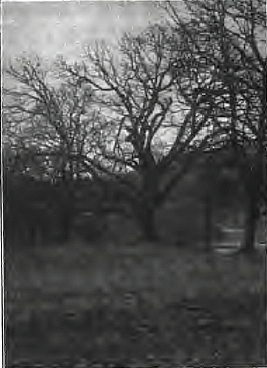 stone opposite his house on which he often sat when practising, and the old oak tree —said to be over three hundred years old (note - see illustration of the tree to the left an another more medern photo at the bottom of the article) —under whose shadow he used to practice, and where he played many a Strathspey and reel for the village lassies, are still there—both within a short distance of the house.
stone opposite his house on which he often sat when practising, and the old oak tree —said to be over three hundred years old (note - see illustration of the tree to the left an another more medern photo at the bottom of the article) —under whose shadow he used to practice, and where he played many a Strathspey and reel for the village lassies, are still there—both within a short distance of the house.
It was during the year of the great rebellion of 1745 that he first became known as a violinist, having competed in that year with nine others —amongst whom was his own tutor—and carried off the prize against all comers ; being adjudged the winner by a blind and skilful musician named John M'Craw, who declared he could detect the stroke of Niel's bow among a hundred players. The above story and others are related in Drummond's " Perthshire in By-gone Days." The superiority he displayed at his first competition he maintained over all other players during his time, not only in Perthshire but throughout Scotland.
Living so near Dunkeld, his reputation attracted the Duke of Atholl, whose patronage —and that of his family, and the nobility and gentry of the neighbourhood—must have assisted materially in spreading his fame. He was presented with violins on various occasions from his patrons and admirers; but some of the stories
*See illustrations.
related in connection with them Mr. Glen, who is an undoubted authority, does not believe ; but all are agreed that he exerted a considerable influence in rendering our national dance and music more popular.
His famous tune "Farewell to Whisky," was composed on the occasion of the distillation of whisky being prohibited in 1799, and it was published in 1801. Some of his other gems are " Niel Gow's Compliments to Mr. Marshall," "Niel Gow's Lamentation for James Moray of Aber- cairny," "Miss Erskine of Torry," " The Duchess of
Atholl's Slipper," "The Brig of Ballater," "Mrs. Moray of Abercairny," ' Mr. Robertson of Lude," "Miss Lucy Campbell," "Miss Stewart of Grandtully," "Lady Madelina Sinclair," "The Duke of Gordon's Favourite," " Miss Drummond of Perth," and many others.
His four sons—viz: William, John, Andrew, and Nathaniel—were also composers of music ; especially Nathaniel, who composed upwards of one hundred and ninety-seven tunes, consisting of Strathspeys, reels, jigs, quicksteps, laments, waltzes, and slow airs. Many of his tunes are most beautiful, and fully equal to the father's— if not surpassing them. He was also in great repute, like his father, as a leader, and had a wide connection all over the country. Daniel, the youngest son, is supposed to have died in childhood. Andrew and John settled in London about 1780 as musicians, and became music- sellers, in 1788, at 60 King Street, Golden Square. A few years after, Andrew fell into bad health and died at Inver, whither he had come, on his father's advice, for change of air to his native place. His partner, John, continued to carry on the music business, besides being leader of the Scottish bands then fashionable, and is said to have amassed a considerable fortune.* Nathaniel is also said to have been worth upwards of £20,000 in his father's declining years.
Upon the whole, Scotland owes a great deal to the Gows for their splendid collections of music ; for, with the exception of William Marshall's and Robert M'Intosh's, their compositions are the best of the old school we have got.
*See Mr. John Glen's Collection, volume II..
Their fame also increased the general taste for our national music ; and as performers on the violin Niel Gow and his son Nathaniel had no equals, though there were many other good players throughout the country.
The following anecdotes regarding Niel Gow are said to be authentic.
On one occasion two gentlemen came from Glasgow to hear him play the violin ; and when within half a mile of his house, they met a man on the road and asked him how far it might be to Niel Gow's house, as they had come all the way from Glasgow to hear him play. He replied: "I am Niel Gow; but I am sure I would not go so far to hear you ! "
On another occasion, on his way to Edinburgh, every person he met addressed him as "Mr. Gow." At last he came across the Dunkeld carrier, who remarked : " Are you here, Niel 1 " " Whisht ! whisht ! man—I have been getting 'Mr. Gow'all day!"
Fishing one day with the Duke of Atholl on the river Tay, the latter killed two salmon, which Niel eyed with great satisfaction. At last he said : " Well, your Grace, if I had two fish, I would give you one of them." " ? you want one, Niel," replied the Duke, and immediately handed him one of them.
On another occasion he bought a cow from a neighbouring gentleman for £5, which he was in no hurry to pay. The gentleman, seeing him one night at a grand ball, took a bet of £5 with another gentleman that he would make the great violinist blush ; so the first opportunity he got he went up to Niel, and said : " Have you no word of paying for that cow you bought from me, Niel 1 " " Well," replied Niel, " I would have been the last man that would have spoken about it." His coolness served him well, and the gentleman lost his bet.
An endless number of similar stories are told of him all over the country, showing the estimation in which he was held by his countrymen. It is also said that "Athole Brose" was his favourite Strathspey ; and that the last tune he played was " Pease Strae," a short time before his death. He was highly respected by rich and poor, and was considered a good neighbour and a thoroughly honest man. A biographical sketch of him by the Rev. Dr. Macnight, who knew him well, appeared in the "Scots Magazine" in 1809, couched in glowing terms as to his moral and religious principles. The same magazine records that though Niel Gow had raised himself to independent and affluent circumstances in his old age, he continued free of any appearance of vanity or ostentation. He retained to the last the same plain and unassuming simplicity in his carriage, his dress, and manners, which he had observed in his early and more obscure years.
His figure was vigorous and manly, and the expression of his countenance spirited and intelligent; and his whole appearance was a model of what national partiality conceives a Scottish Highlander to be. His portrait was painted by Sir Henry llaeburn for the County Hall at Perth, and separate ones for the Duke of Atholl, Lord Grey, the Hon. Mr. Maul Pans- mure, and the Gow family. His likeness was also introduced into pictures by other artists, and an engraved portrait was published in 1815. There is also an excellent copy of the Raeburn portrait at Inverness, and another in the possession of the Earl of Moray. Our illustration is a photograph from one of the Raeburn portraits, and said to be a striking likeness. The original portrait by Sir Henry Raeburn ie in the Scottish National Portrait Gallery, Edinburgh. It is nearly full length, and represents him seated playing the violin. It shows a full, honest, kindly face, dark brown hair touched with white, parted in the centre and rather long behind, greyish hazel eyes, dark eyebrows, shaven face, mouth dimpled at corners, double chin, dark bluish coat and vest with grey buttons, knee breeches and hose of red and green tartan yellowish brown back-ground ; canvas, 481 by 38£. This portrait was formerly in the possession of Henry Raeburn, Esq., J.P., of St. Bernards who, in an autograph letter now in the hands of the Trustees of the Gallery, certifies that " This is the original portrait painted by the late Sir Henry Raeburn, my father ; and that the other portraits of Niel Gow painted by him were copies thereof." Mr. Raeburn presented the picture to Robert Salmond, Esq., who lent it to the National Gallery of Scotland from 1871 to 1883. Engraved in mezzotint by William Say ; in stipple by Scott ; and as a vignette in line by Groll. Purchased, April, 1886.
Niel Gow died at Inver, near Dunkeld, his birth-place, on the 1st of March, 1807, full of years and honour, in his 80th year; and was buried in Little Dunkeld churchyard, where his sons, John and Nathaniel, erected a marble tablet to his memory.
We may conclude this notice of Scotland's greatest violinist, in his day, by quoting the following lines from the British Geórgica, said to be by the late Rev. Mr. Graham.
" The blythe Strathspey springs up,
reminding some
Of nights when Gow's old arm (nor old the tale)
Unceasing—save when cans went round-
Made heart and heel leap light as bounding roe.
Alas ! no more shall we behold that look
So venerable, yet so blent with mirth
And festive joy sedate ; that ancient garb
Unvaried—tartan hose and bonnet blue !
No more shall beauty's partial eye draw forth
The full intoxication of his strain
Mellifluous, strong, exuberantly rich!
No more amid the pauses of the dance,
Shall he repeat those measures that in days
Of other years could soothe a fallen prince,
And light his visage with a transient smile
Of melancholy joy—like autumn sun
Gilding a sere tree with a passing beam !
Or play to sportive children on the green,
Dancing at gloaming' hours ; or willing cheer,
With strains unnbought. the shepherd's bridal day."K. N. Macdonald, M.D.
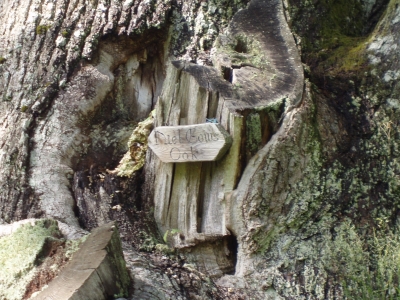
The oak tree where Niel Gow enjoyed practicing and composing new tunes. Another image of the famous tree and the view from it can be seen below.
The Music Of Fiddler 1. Music published by Niel Gow
Prepared as PDF files in an easy to print format
|
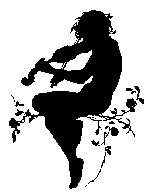
Other collections you might be
interested in:
The music of one of the
He was born into a very poor family on New Year's Eve in 1857 to Rose and Henry Carling in the "Irish Quarter'' in Liverpool. I have arranged 6 pieces of music from the handwritten (often difficult to decipher) music notation of James Carling, as he says, "one of the last hereditary bards". |
The Music of Fairies, Druids, Spirits (and more)
|
Early American music, |
|
